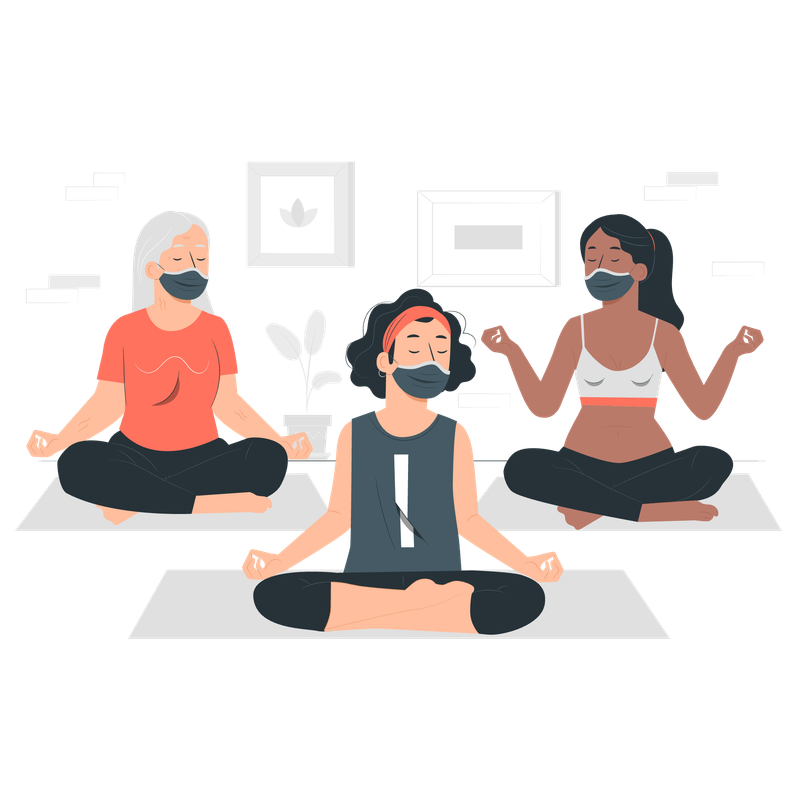Yoga Feels Amazing—Until It Doesn’t
You unroll your yoga mat, take a deep breath, and settle into child’s pose. For a moment, everything feels perfect. But then—ouch! A pulled muscle, a sore wrist, or a slipped foot can quickly ruin your practice.
If you've ever felt intimidated walking into a yoga class or worried whether you're doing a pose “right,” you're not alone. Yoga is meant to feel good in your body—not land you in the ER. And yet, thousands of yoga-related injuries are reported every year.
The good news? Staying safe during yoga is simple when you know what to look out for. Whether you’re brand new to yoga or just getting back on the mat, these practical tips can help you protect your body and build a consistent, injury-free practice.
Why Yoga Safety Matters (Even If You’re Fit and Flexible)
It’s easy to think yoga is “gentle,” especially compared to high-intensity workouts. But yoga can challenge muscles, joints, and balance in ways you might not expect. From shoulder strain in downward dog to slipping on a sweaty mat—injuries happen when we rush, push too hard, or skip the basics.
The purpose of yoga isn’t to impress anyone it’s to connect with your body. That connection deepens when we listen, modify, and approach our practice with mindfulness.
1. Start Slow and Let Your Body Lead
Jumping straight into advanced poses or power yoga classes can be tempting—especially if you're eager to "catch up" or see results fast. But yoga isn’t a competition. In fact, the fastest way to grow is to start slow.
Choose beginner-friendly classes: Look for classes labeled “gentle,” “restorative,” or “foundations.”
Private instruction can help: If you’re unsure about alignment or modifications, a few sessions with a certified instructor can set a strong foundation.
Your ego isn’t invited: Yoga teaches us to leave judgment (and perfection) at the door.
Real talk: Many seasoned yogis regret not starting with beginner classes. They spent months unlearning poor habits—don’t make that mistake.
2. Use the Right Equipment (It's Not Just About the Mat)
Think yoga is just about bending and breathing? Not quite. The right props can make or break your experience—literally.
Yoga mat: Choose one with solid grip and cushioning to protect your knees and wrists.
Blocks and straps: These aren’t cheating—they’re tools to help your body ease into poses safely.
Towel or blanket: Useful for added comfort or to absorb sweat and prevent slipping.
Pro tip: If a pose feels uncomfortable, try using a block or strap before forcing your way into it. Safety always trumps depth.
3. Dress Smart—Your Clothes Matter More Than You Think
Ever tried doing downward dog in jeans or a loose tee? Not fun. The wrong clothes can distract you—or worse, cause accidents.
Avoid baggy outfits: Loose pants or tops can get tangled or ride up during inversions.
Stick to breathable, form-fitting clothes: Look for moisture-wicking fabrics that move with you.
Ditch the socks: Unless they’re yoga-specific with non-slip grips, going barefoot is usually best.
Example: A flowy t-shirt might seem comfy, but it could flip over your head mid-pose. Opt for a fitted tank instead—your future self will thank you.
4. Learn from Real Humans, Not Just YouTube
Yes, online yoga videos are super convenient. But they can’t spot a misaligned knee or tell you when you’re overextending your back.
Consider in-person or live virtual classes: Real-time feedback can prevent small errors from becoming chronic issues.
Supplement with digital classes: Once you’ve learned the basics, apps and YouTube channels can help you stay consistent.
Stay curious: Good instructors explain why a pose works—not just how to do it.
Story: A friend of mine did yoga daily with YouTube—and then strained her wrist doing chaturanga incorrectly for months. One live class fixed what she didn’t even know was wrong.
5. Always, Always Listen to Your Body
This one might sound cliché, but it’s the most powerful safety tool you have. Every body is different, and every day feels different.
Modify without guilt: There’s no gold medal for touching your toes or mastering a handstand.
Pain is a red flag: Discomfort is okay; sharp pain is not.
Take breaks: Resting in child’s pose isn’t weakness—it’s wisdom.
Mindful tip: Keep a journal of how you feel before and after each practice. Patterns may reveal where you need more support or recovery.
How to Stay Safe in Yoga
✅ Start slow and build a solid foundation
✅ Use supportive gear—mat, blocks, straps
✅ Wear proper clothing for movement and safety
✅ Learn from trained instructors before going solo
✅ Respect your limits and modify as needed
FAQ – Yoga Safety Essentials
Q: Is it normal to feel sore after yoga?
A little soreness is okay, especially when you’re new. But sharp or lasting pain isn’t—modify or consult a pro.
Q: Can beginners skip props?
Not recommended. Props help support your body and prevent injury, especially when you're still learning.
Q: Should I avoid yoga if I have an injury?
Talk to your doctor or physical therapist first. There are often gentle yoga styles (like restorative or chair yoga) that can aid healing.
Final Thoughts: Your Practice, Your Peace
Yoga is a journey, not a destination. Staying safe allows you to stay consistent—and consistency is where the real magic happens. Whether you’re practicing in a studio, at home, or somewhere in between, treat your body with patience and care.
Have a tip or a story about your yoga journey? Drop it in the comments below—let’s learn from each other. And if you found this post helpful, share it with a friend who’s just getting started




